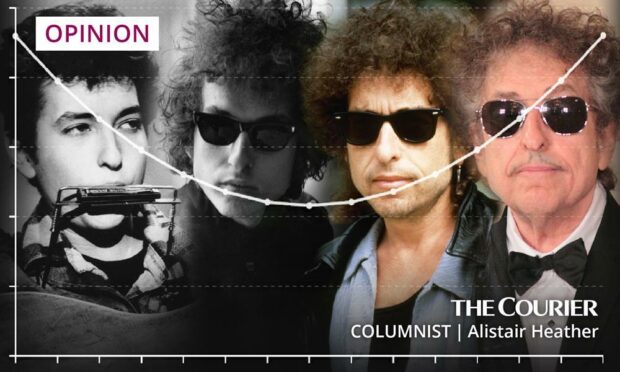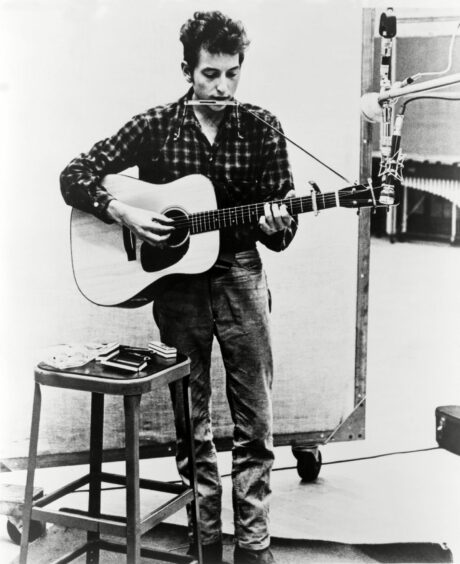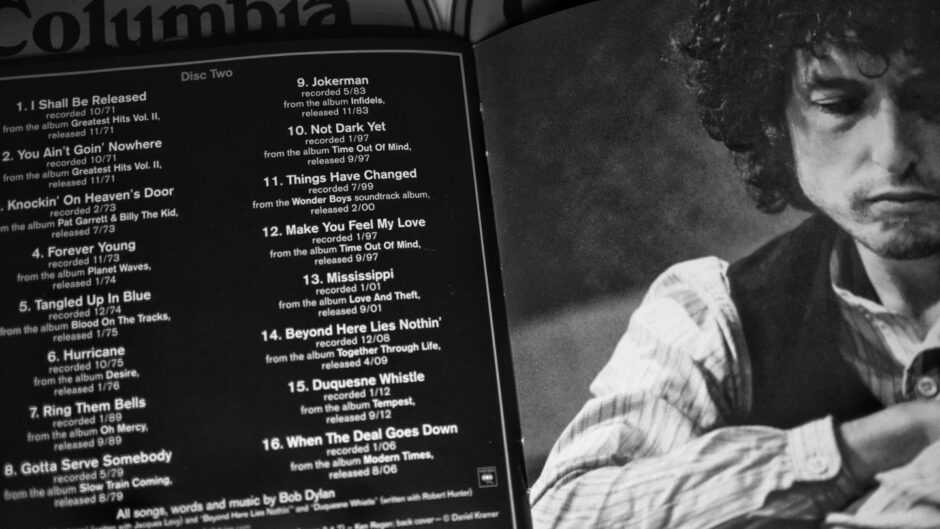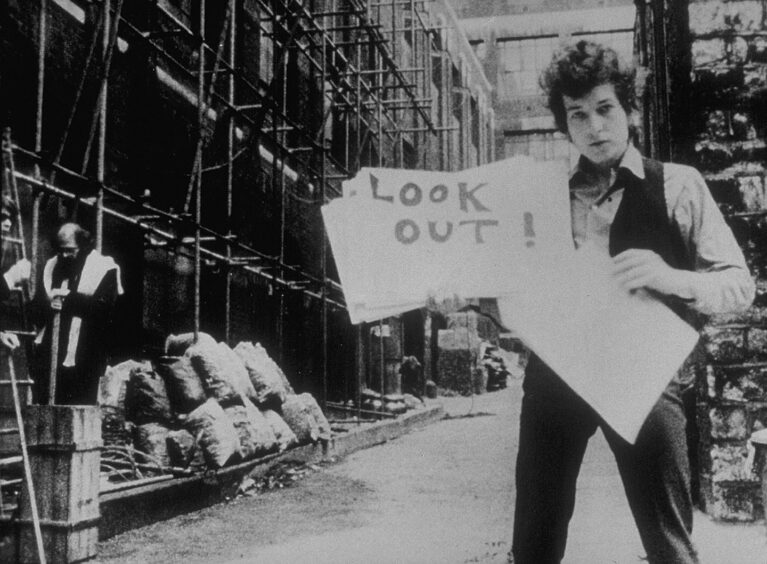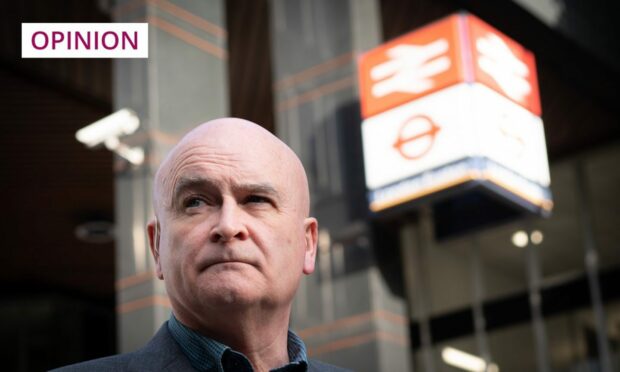I was listening to some mid-life Bob Dylan albums the other day, and reflecting on how bad they were.
Like, honest to goodness garbage.
I love big Bob more than most. I rely on his works as an emotional compass, helping me pick a path through the befuddling morass of life.
So I had gone to his archive to find a suitably meditative soundtrack for a thoughtful evening.
Instead, I got distracted wondering on the fact he spent a couple of decades producing utter keich when he could have been usefully contributing to humanity’s great artistic store.

Why did this talented songwriter, who wrote banger after banger in the 60s and early 70s, then again in the late 90s and 2000s, so badly lose his way?
And that’s how I discovered the happiness U-curve.
I cannae believe I’d never heard of it.
If you havnae heard of it either: brace yersel.
Studies of people across all continents, societies, nations, genders and incomes reveal that humans experience a big dip in happiness in our middle years.
It is a remarkable truth of human experience, yet hardly anyone seems to know about it.
Happiness by numbers
The data tells us what our experiences already indicate.
We’re happiest when we’re dead young, like, under 18.
We’re generally pretty chirpy in our early twenties, albeit dipping markedly in life satisfaction as the springtime of our youths fade.
Our mid thirties can be something of a rallying point in many countries, the United States for one.
We seem broadly to get ourselves out of the tailspin of our late twenties, at least, without perhaps rediscovering the real heady joys of our teens.
Now you know: Predicted probability of being very happy, by age. (52-year-olds unite) pic.twitter.com/asraoIxrMp
— Philip N Cohen (@familyunequal) December 24, 2019
But the data suggests life enters its doldrums for us in our 40s & 50s.
The stretch from 45-56 seems a real drag.
Then, out of nowhere, satisfaction starts to spike.
Everything turns rosy from our 60s, and internationally, across borders, across rich and poor divides, folk just seem delighted to be alive again.
Which brings me back to Bob Dylan, now aged 80, and his 20-year stink patch.
Was Bob Dylan just following the U curve?
Musicologists have debated for years the nature and reasons behind his variable output.
Many blame producers.
Many blame an entitlement on the part of the artist: he stopped trying so hard.
I have a new theory.
I think Dylan’s discography can be mapped pretty perfectly onto the U-curve of human happiness.
His self-titled Bob Dylan came out when he was 21.
From there he banged out a couple of classic albums, and in 1963, aged 22, he stood up alongside Martin Luther King and performed Blowin in the Wind in front of the assembled thousands.
He was the darling child of the counterculture.
Our U-shape graph tells us that satisfaction is high, but begins to dip from our mid twenties.
Dylan’s albums track this chart perfectly.
His mid 60s albums are masterpieces.
But as they progress, they lose the smile and smirk of the earliest work.
He trawled some depths before hitting the heights
It’s all downhill when we get to 1978.
Street Legal. Awful.
Thirty-seven-year-old Dylan is on the dangerous slide towards humanity’s least satisfied years.
For poor old Bob, these were marked by two decades of dross and dreck that got me mulling at the start of this article.
Bang average album after bang average album.
But then there’s a huge change.
And this is where the Dylan/happiness curve correlation gets spooky.
The graph clearly shows that in our late 50s, we experience a renaissance.
We suddenly start feeling much happier, more content, more satisfied with life.
Dylan, in 1997, aged 56, dropped Time Out of Mind.
It was astoundingly good.
It won the Grammy for Album of the Year.
As humanity’s general contentment is shown to rise and rise steadily, so does the quality of Dylan’s output.
The top of the steep brae on the U-bend occurs at about 65.
At precisely that age, Dylan released 2007’s Modern Times.
If ye havana heard it, away and find it now. It’s a belter.
Bob’s bounce-back brings hope for us all
There’s a serious point to all this.
These dark months can bring on sullenness, even depression.
The happiness U-curve study I read indicated that suicides spike in line with the lowest parts of the curve.
Deaths of despair – to use a poignant American phrase – peak in midlife.
This is particularly true for working class folk.
I feel better knowing that my 50s stand a very good chance of being depressing.
Forewarned is forearmed.
I can take precautions, make sure I have help when I need it.
And in the dark days, I can remind myself that things are statistically sure to feel better once I hit my 60s.
My dark evening meditations with Bob’s worse output brought solace, after all.
I found this knowledge of the U-curve peace-inducing.
We, the low, are on the same ride as the great and the good.
For all his money, talent and success, the iconic sangster Dylan is as tethered to the tumult of human experience as the rest of us.
So if you’re feeling the midwinter blues hard, if the Christmas tide has gone out and left you high and dry, know that all we need to do is hang on through the lows.
The late life high is coming.
